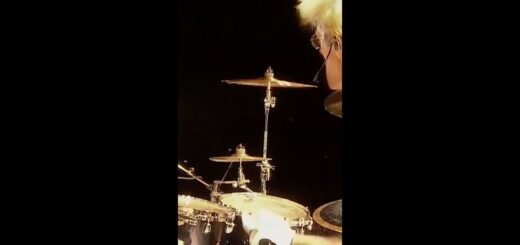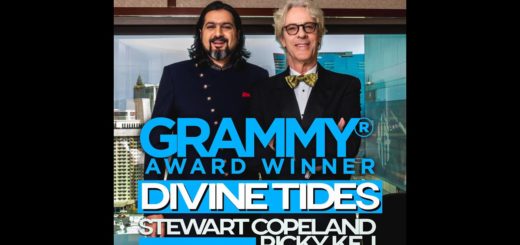Buddy Rich – The Chronological Classics: 1946-1948 (1999)
0
Tracklist
00:00 You Got Me Cryin’ Again
02:52 It Couldn’t Be True
05:34 Quiet Riot
08:26 Baby, Baby All the Time
11:53 Route 66
15:10 The Iggity Song
18:14 It’s About Time
20:52 Ready to Go Steady
13:51 Rich-ual Dance
“If you enjoyed this video, a ‘like’ would be great. Subscribe if you haven’t already!” Comment on your experience in the comment box “a big hug”
Bernard “Buddy” Rich (September 30, 1917 – April 2, 1987) was an American jazz drummer, songwriter, conductor, and bandleader. He is considered one of the most influential drummers of all time.
Rich was born and raised in Brooklyn, New York, United States.He discovered his affinity for jazz music at a young age and began drumming at the age of two. He began playing jazz in 1937, working with acts such as Bunny Berigan, Artie Shaw, Tommy Dorsey, Count Basie, and Harry James. From 1942 to 1944, Rich served in the U.S. Marines. From 1945 to 1948, he led the Buddy Rich Orchestra.In 1966, he recorded a big-band style arrangement of songs from West Side Story. He found lasting success in 1966[citation needed] with the formation of the Buddy Rich Big Band, also billed as the Buddy Rich Band and The Big Band Machine.
Rich was known for his virtuoso technique, power, and speed. He was an advocate of the traditional grip, though he occasionally used matched grip when playing the toms. Despite his commercial success and musical talent, Rich never learned how to read sheet music, preferring to listen to drum parts and play them from memory.
Early life and career
Rich was born in Sheepshead Bay, Brooklyn, New York, to Jewish parents Bess Skolnik and Robert Rich, both American vaudevillians: 6 Before he turned two, he was part of his parents’ act in vaudeville, but on breaks he would sneak into the orchestra pit and try to get the drummer’s sticks. Rich would often sneak into jazz clubs at an age when he looked old enough to sit on the drum set.He was on Broadway as Baby Traps the Drum Wonder at age four, playing “The Stars and Stripes Forever” on a drum.He was a singer and tap dancer.In his teens he led a band and toured in the U.S. and Australia. At 15 he became the second highest paid child entertainer behind Jackie Coogan during the 1930s.
Death
Rich toured and performed until the end of his life. In early March 1987, he was touring in New York when he was hospitalized after suffering a paralysis on his left side that physicians believed had been caused by a stroke. He was transferred to California to UCLA Medical Center in Los Angeles for tests, where doctors discovered and removed a brain tumor on March 16. He was discharged a week later, but continued to receive daily chemotherapy treatments at the hospital. On April 2, 1987, he died of unexpected respiratory and cardiac failure after a treatment related to the malignant brain tumor.His wife Marie and daughter Cathy buried him in Westwood Village Memorial Park Cemetery in Los Angeles.He was 69.
Since Rich’s death, a number of memorial concerts have been held. In 1994, the Rich tribute album Burning for Buddy: A Tribute to the Music of Buddy Rich was released. Produced by Rush drummer/lyricist Neil Peart, the album features performances of Rich staples by a number of jazz and rock drummers such as Joe Morello, Steve Gadd, Max Roach, Billy Cobham, Dave Weckl, Simon Phillips, Steve Smith and Peart, accompanied by the Buddy Rich Big Band. A second volume was issued in 1997. Phil Collins was featured in a DVD tribute organized by Rich’s daughter, A Salute to Buddy Rich, which included Steve Smith and Dennis Chambers.
Legacy
Rich’s technique, including speed, smooth execution and precision, is one of the most coveted in drumming and has become a common standard. Gene Krupa described him as “the greatest drummer ever to have drawn breath”.Roger Taylor, drummer of Queen, acknowledged Rich as the best drummer he ever saw for sheer technique.Blink-182 drummer Travis Barker has credited Rich as the greatest drummer of all time.
Rich’s influence extends from jazz to rock music, including drummers such as Dave Weckl,Vinnie Colaiuta,Adam Nussbaum, Simon Phillips,Hal Blaine, John Bonham,Carl Palmer,Jan Paice,Gregg Bissonette,Jojo Mayer,Tré Cool, and Bill Ward. Phil Collins stopped using two bass drums and started playing the hi-hat after reading Rich’s opinion on the importance of the hi-hat.
Awards and honors
In 1980, Rich was awarded an honorary doctorate of music from Berklee College of Music.
In 1986, a year before his death, Rich was elected into the Percussive Arts Society Hall of Fame in the category of bandleader, and drum set player.
On September 30, 2017, Rich was honored with a Star on the Palm Springs Walk of Stars.



最近のコメント